Overview
This article dives into five creative strategy shifts that agencies can roll out every quarter to boost their success in today’s ever-changing market. It highlights how crucial innovation, data-driven decision-making, and stakeholder engagement are in crafting and assessing these strategies. Together, these elements empower organizations to adapt to shifting consumer behaviors and enhance their overall performance. So, what does this mean for you? Let’s explore how these strategies can make a real difference!
Introduction
In today's fast-paced world of tech advancements and changing consumer expectations, agencies really need to rethink their creative strategies to stay ahead of the game. By making quarterly adjustments to their approaches, organizations can boost their responsiveness to market trends and cultivate a culture of innovation that fuels success.
But here’s the kicker: the real challenge is figuring out where their current strategies fall short and how to implement new ones that align with their broader business goals.
So, how can agencies navigate this tricky landscape to unlock their full potential and achieve lasting success?
Understand the Importance of Creative Strategy Shifts
Innovative approaches are super important for firms that want to thrive in a fast-changing market. By spotting these changes, organizations can make creative strategy shifts by quarter to keep up with new trends, shifting consumer behaviors, and tech advancements. This proactive mindset creates a culture of innovation and adaptability, helping organizations tackle client needs and market challenges head-on.
For example, companies that embrace creative strategy shifts by quarter can tap into AI-powered analytics, like those offered by Creator Check, to boost their campaigns and ultimately see a better ROI. Creator Check's AI-powered inbox and automated processes streamline communication and management, letting organizations focus on the big-picture tasks. This not only ramps up client satisfaction but also positions the firm as a leader in the industry, adept at delivering innovative solutions.
As Daniela La Marca pointed out, "Agencies that view AI as a collaborative partner rather than a threat will unlock smarter workflows, richer storytelling, and quicker results." So, what does this mean for you? Embracing innovation could be the key to unlocking your agency's full potential!
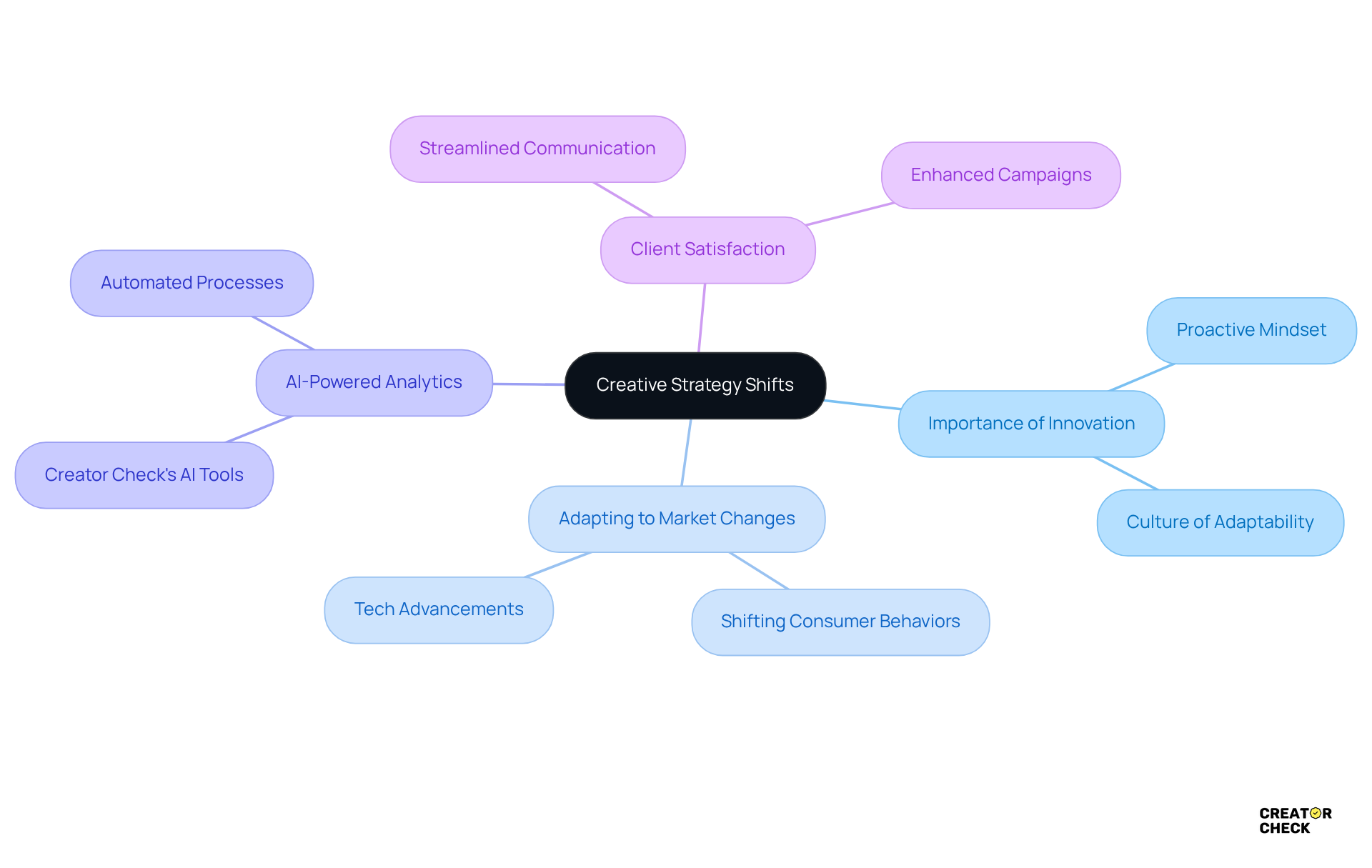
Assess Current Creative Strategies and Identify Gaps
To effectively evaluate current innovative approaches, agencies should take a good look at their ongoing projects, tools, and procedures. This means gathering insights on promotional performance, client feedback, and market trends. Have you thought about using analytics tools to check out key performance indicators (KPIs) like engagement rates, conversion rates, and return on investment (ROI)? By 2025, average engagement rates for influencer marketing initiatives are expected to hover around 3.5%. Plus, with 54% of multinational brand marketers planning to boost their influencer marketing budgets, the importance of effective methods can't be stressed enough.
Now, let’s consider collecting perspectives from team members and stakeholders. This can really help in spotting any perceived gaps in planning. If a campaign isn't hitting the mark, it's crucial to dig into the creative elements, target audience alignment, and distribution channels to identify potential issues. Notably, Gen Z values authenticity and relevance in influencer marketing, which underscores the need for companies to tweak their approaches accordingly. Documenting these findings creates a detailed overview of the organization’s strengths and weaknesses, which is vital for steering future planning.
Organizations that can spot and address these gaps have the opportunity to leverage predictive analytics. This allows them to forecast which influencers and strategies are likely to yield successful outcomes based on past project data. This proactive approach not only boosts initiative efficiency but also helps organizations adapt to the ever-evolving preferences of their audiences. And let's not forget, balancing AI's efficiency with human creativity is key to crafting authentic and engaging content that truly resonates with target audiences.
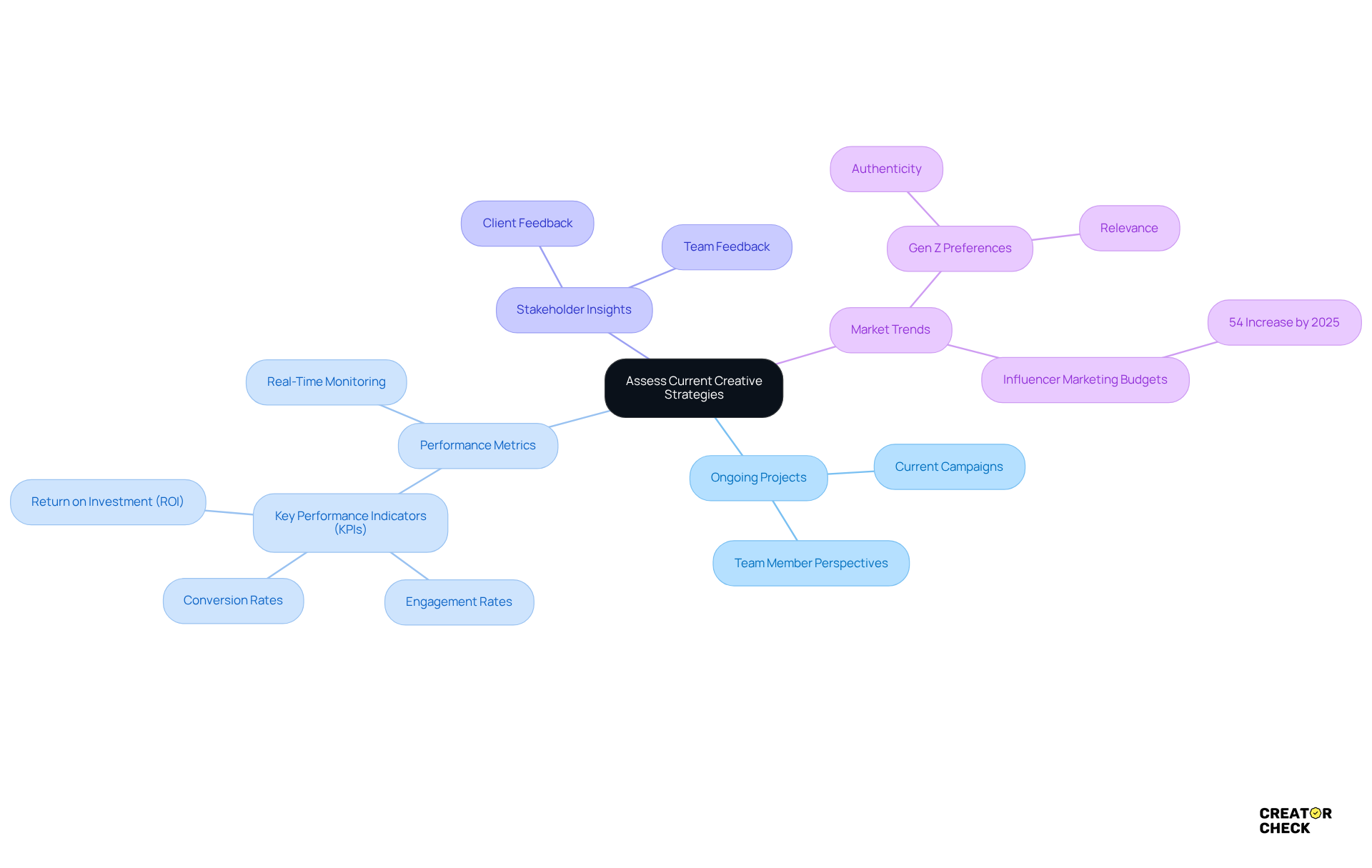
Develop a New Creative Strategy Aligned with Business Goals
After spotting some gaps, the next step is to whip up an innovative plan that fits right in with your organization's business objectives. Start by setting clear, measurable goals that truly reflect your agency's vision and mission. For instance, if you're looking to boost brand awareness, focus on creative content and targeted outreach efforts. Why not get your team involved in brainstorming sessions? This can spark some creative ideas that really resonate with your target audience, especially when you back them up with data insights.
And don't forget to incorporate emerging trends! Think about using interactive content or teaming up with influencers to ramp up audience engagement. Plus, a data-driven approach is key for aligning your marketing initiatives with your business KPIs. Did you know that 78% of firms that tweak their plans feel effective at hitting their marketing goals?
Now, your approach should also include a solid implementation plan that lays out timelines, responsibilities, and resource allocation. Regularly reviewing and adjusting your marketing plan with creative strategy shifts by quarter is essential to keep it in sync with your business goals. Also, consider using project management tools like Trello or Asana to simplify task assignments and management as you roll out your new plan.
This organized method not only helps you transition smoothly to the new plan but also ensures it stays aligned with your overarching business goals, ultimately paving the way for your agency's success.
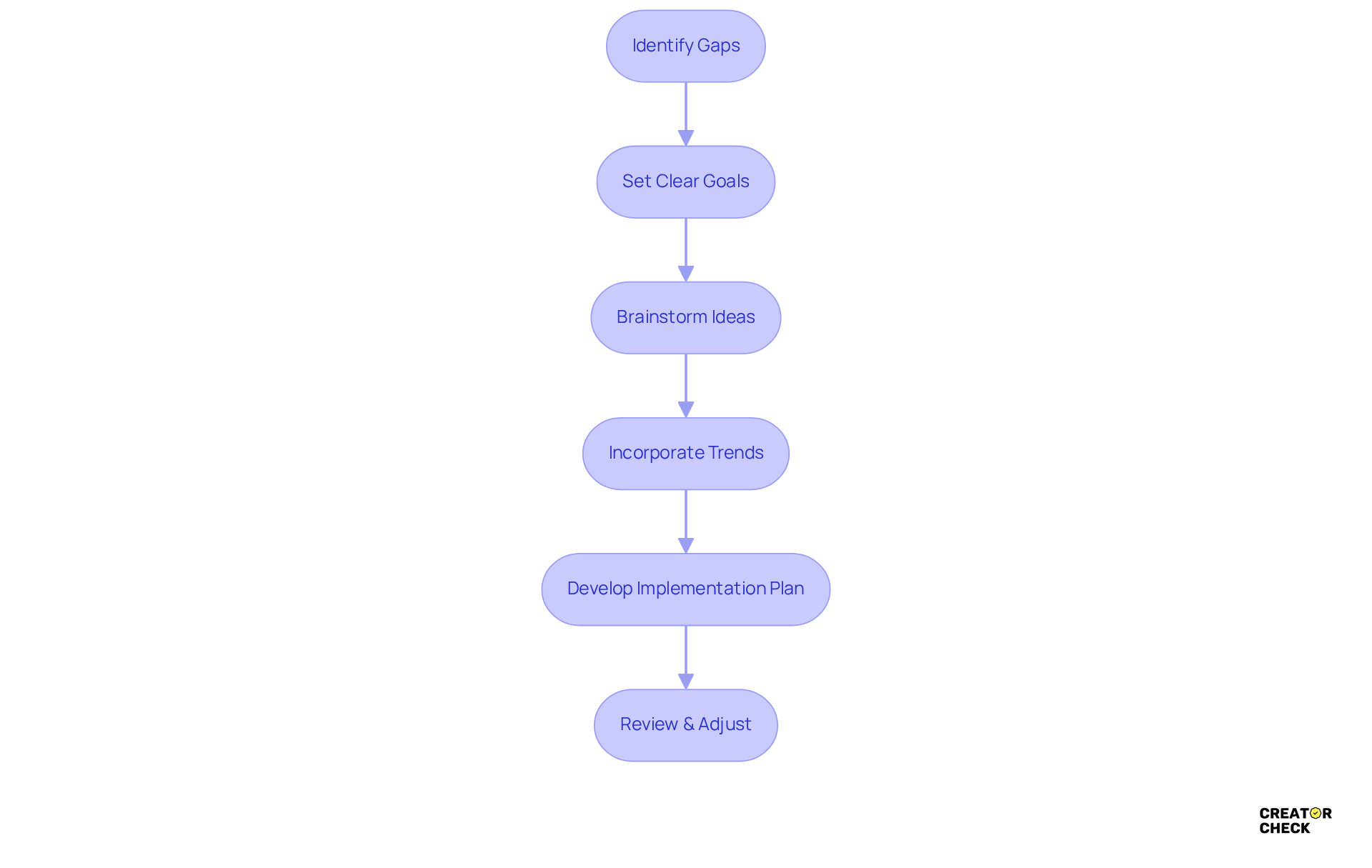
Implement the New Strategy with Stakeholder Engagement
Implementing a new creative approach really hinges on effective stakeholder engagement to ensure everyone is on the same page and supportive. So, how do we kick things off? Start by clearly sharing the plan with all team members—make sure to highlight its objectives and the expected results. Organizing workshops or meetings is a great way to gather feedback and tackle any concerns. This helps create a collaborative vibe!
Now, think about assigning roles and responsibilities that play to individual strengths. For instance, if someone on your team is a whiz at social media marketing, bring them on board to help develop that part of the plan. Keeping those lines of communication open throughout the implementation process is key—regular updates on progress and celebrating milestones can make a big difference.
This inclusive approach not only fosters a sense of ownership among stakeholders but also significantly boosts the chances of successful implementation. Involving stakeholders early in the process leads to better alignment and support, which ultimately ramps up the effectiveness of your innovative strategies.
As Dr. Gleb Tsipursky points out, effective stakeholder engagement is crucial for business success. Plus, using tools like Creator Check can save organizations hours of manual work each week, making things even smoother. And did you know that 66% of behavioral skills are embedded in procurement teams? Focusing on these skills can really enhance stakeholder interactions and drive better outcomes. So, what are your thoughts on this approach?
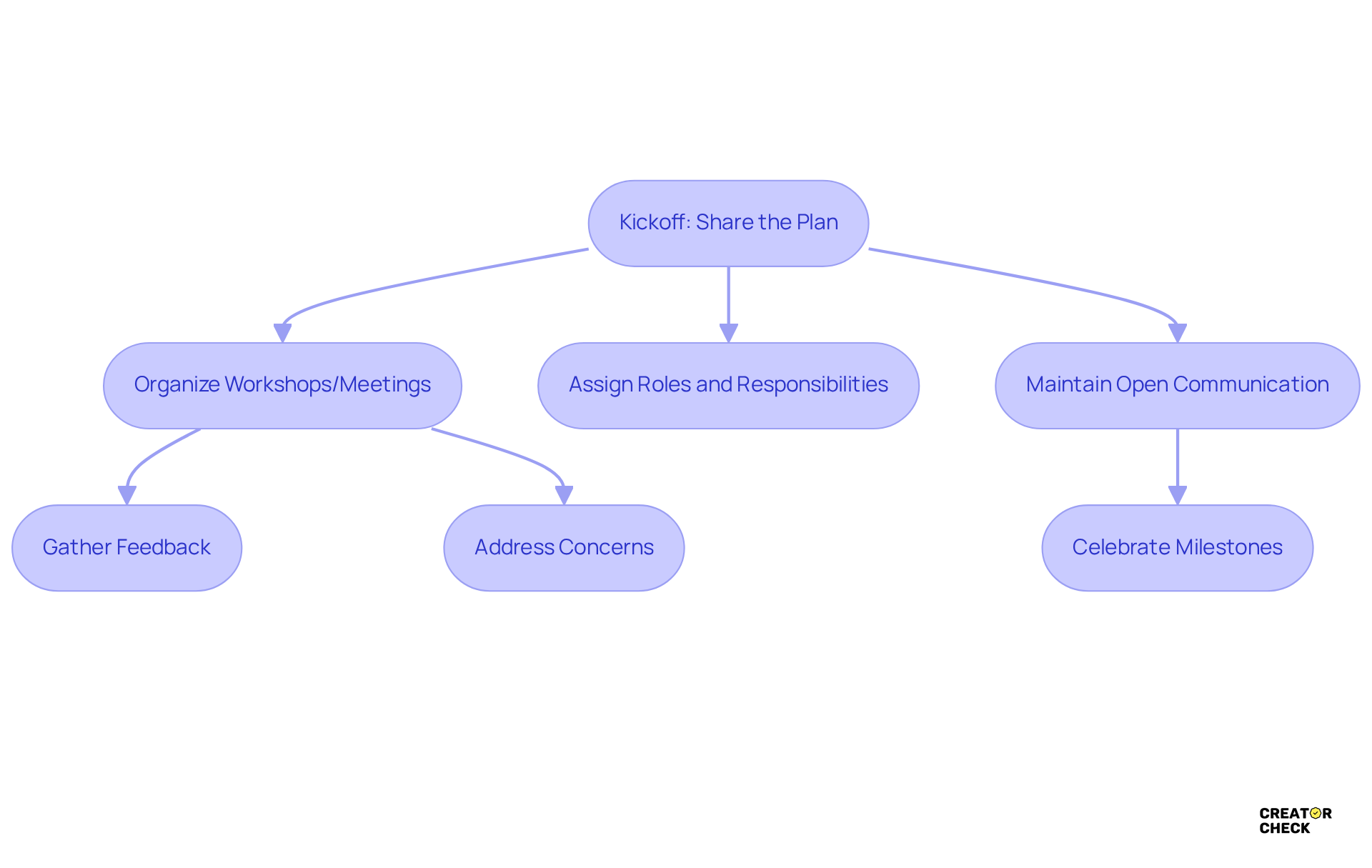
Measure and Analyze the Impact of Creative Strategy Shifts
To really get a handle on how innovative approach changes are impacting your organization, it’s essential to set up a solid evaluation framework that blends both qualitative and quantitative metrics. So, where do you start? Begin by laying down some success standards based on the goals you outlined during your planning phase. You’ll want to use analytics tools to keep an eye on performance metrics like engagement rates, conversion rates, and overall ROI. Interestingly, over 90% of marketers prefer independent measurement for credibility and insight into agency performance. This really highlights just how crucial a reliable evaluation process is.
But that’s not all! It’s also important to gather qualitative feedback from clients and team members to gauge their thoughts on the new approach. For example, you might consider running surveys or interviews to understand how this shift has influenced client satisfaction and brand perception. Make it a habit to regularly review these metrics and feedback. This way, you can pinpoint areas for improvement and make data-driven adjustments to your strategy. This ongoing evaluation will help your organization stay agile and responsive to the ever-changing market landscape, ultimately boosting your success.
Now, let’s talk about the challenges that come with measuring marketing ROI. Traditional methods like Mix Modeling and Attribution often have their limitations, but acknowledging these can give you a more rounded view of the landscape agencies are navigating. Plus, incorporating expert opinions—like the need for person-centric insights from a single data set—can really enhance the credibility of your evaluation framework. And don’t forget about the importance of share of voice as a measurement tool; it can add even more depth to your discussions about evaluation frameworks.
So, what does this mean for you? It’s all about creating a robust evaluation process that not only tracks performance but also engages with the insights from your team and clients. By doing this, you’ll be well on your way to refining your strategies and achieving greater success.
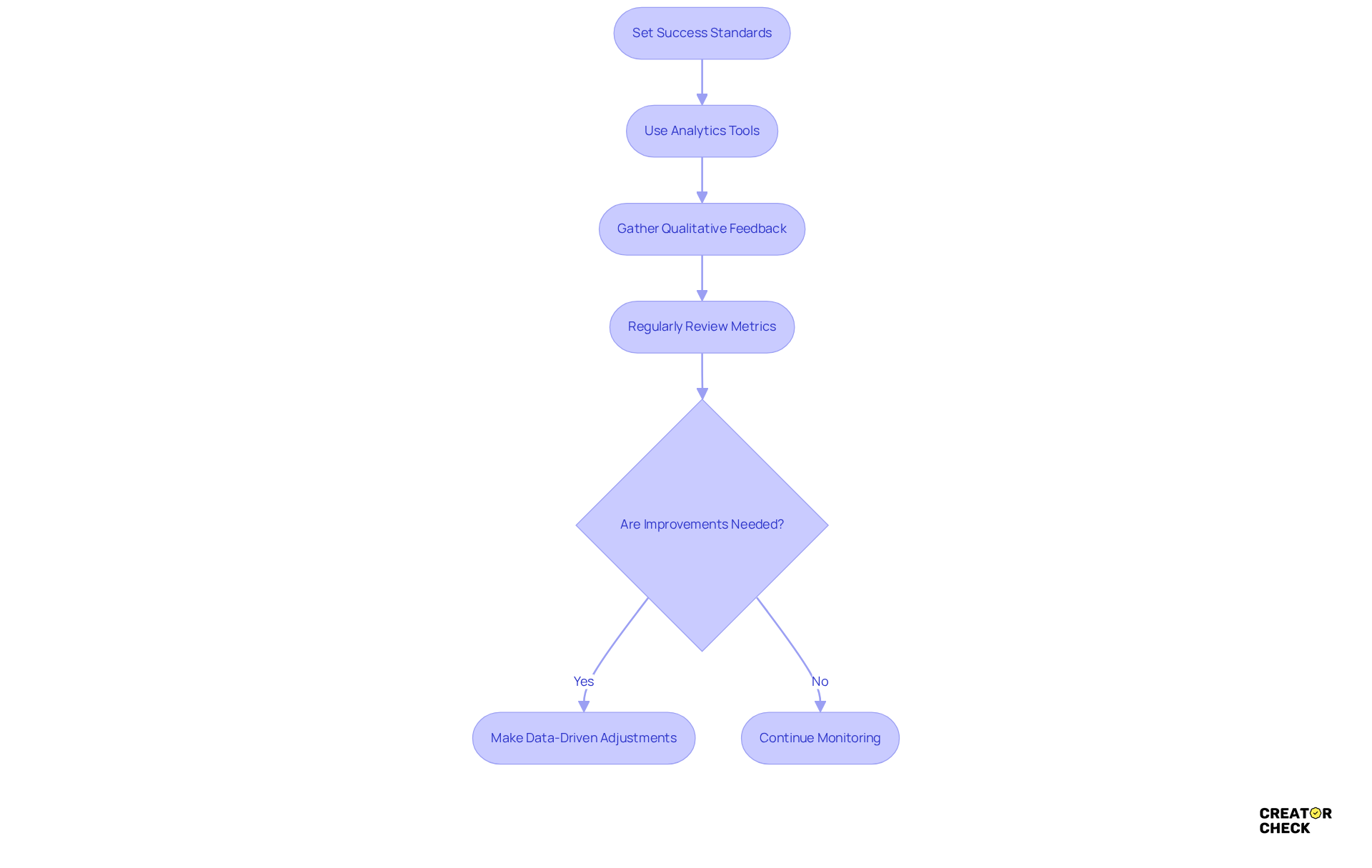
Conclusion
In a rapidly changing market, being able to shift creative strategies every quarter is crucial for agencies that want to stay competitive and relevant. By welcoming innovation and adapting to the evolving behaviors of consumers and technological trends, organizations can cultivate a culture of creativity and responsiveness that meets client needs and tackles market challenges head-on.
Throughout this article, we’ve explored various strategies, like evaluating current creative approaches, spotting gaps, and crafting new strategies that align with business goals. We’ve also highlighted the importance of engaging stakeholders during implementation and measuring the impact of these shifts. Together, these insights emphasize how vital a proactive, data-driven approach is for boosting agency performance and client satisfaction.
So, what does this mean for you? Agencies need to make creative strategy shifts a core part of their operations. By doing this, they not only enhance their adaptability and innovation but also position themselves as industry leaders, ready to face tomorrow’s challenges. Embracing this mindset will pave the way for sustainable growth and success in an ever-changing landscape. Remember, it’s all about staying ahead and being ready for whatever comes next!
Frequently Asked Questions
Why are creative strategy shifts important for organizations?
Creative strategy shifts are crucial for organizations to thrive in a fast-changing market. They allow firms to adapt to new trends, shifting consumer behaviors, and technological advancements, fostering a culture of innovation and adaptability.
How can companies implement creative strategy shifts effectively?
Companies can implement creative strategy shifts by utilizing AI-powered analytics tools, such as those offered by Creator Check, to enhance their campaigns and improve ROI. These tools streamline communication and management, allowing organizations to focus on larger strategic tasks.
What role does AI play in creative strategy shifts?
AI serves as a collaborative partner for agencies, enabling smarter workflows, richer storytelling, and quicker results. Embracing AI can unlock an agency's full potential in delivering innovative solutions.
What should agencies do to assess their current creative strategies?
Agencies should evaluate their ongoing projects, tools, and procedures by gathering insights on promotional performance, client feedback, and market trends. Using analytics tools to analyze key performance indicators (KPIs) like engagement rates and ROI is essential.
What are the expected engagement rates for influencer marketing by 2025?
By 2025, average engagement rates for influencer marketing initiatives are expected to hover around 3.5%.
How can organizations identify gaps in their creative strategies?
Organizations can identify gaps by collecting perspectives from team members and stakeholders, analyzing campaign performance, and reviewing creative elements, target audience alignment, and distribution channels.
Why is it important to balance AI efficiency with human creativity?
Balancing AI's efficiency with human creativity is key to crafting authentic and engaging content that resonates with target audiences, ensuring that marketing efforts are both effective and relatable.




